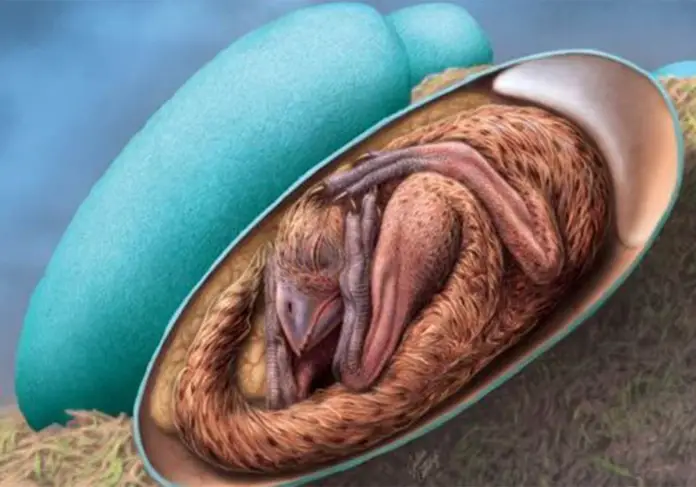Researchers have declared the finding of an impeccably preserved dinosaur fetus that was getting ready to hatch from its egg just like a normal bird.
According to BBC, the fetus was found in Ganzhou in southern China and scientists guess that it is at least 66 million years old.
It is reported to be a toothless theropod dinosaur, or oviraptosaur, and has been christened Baby Yingliang.
Scientist Dr Fion Waisum Ma said it was the most perfect dinosaur fetus ever discovered in history.
The find has also given scientists a greater comprehension of the connection between the prehistoric behemoths and modern birds. The fossil displays the fetus in a curved position known as ‘tucking’, which is behavior observed in birds just before they hatch.
According to Dr Ma, this points to the fact that such actions in modern birds first evolved and originated among their prehistoric ancestors.
Oviraptosaurs, which denotes ‘egg thief lizards’ were feathered behemoths which thrived in what is now Asia and North America during the Late Cretaceous period – between 100 million to 66 million years ago.
Paleontologist Dr. Steve Brusatte who also joined in the research said on Twitter that it was one of the most amazing dinosaur fossils he had ever witnessed, and that the fetus was on the verge of hatching.
The fetus measures 10.6in in length from head to tail, and lies inside a 6.7 inch-long egg at the Yingliang Stone Nature History Museum in China.
The egg was first unveiled in 2000, but put into repository for a decade.
It was just when building work began on the museum and old fossils were being sorted out that scientists paid attention to the egg, which they thought was carrying a fetus within.
A portion of the dinosaur’s body is yet hidden by rock and scientists will utilize advanced scanning methods to construct an image of its complete skeleton.







